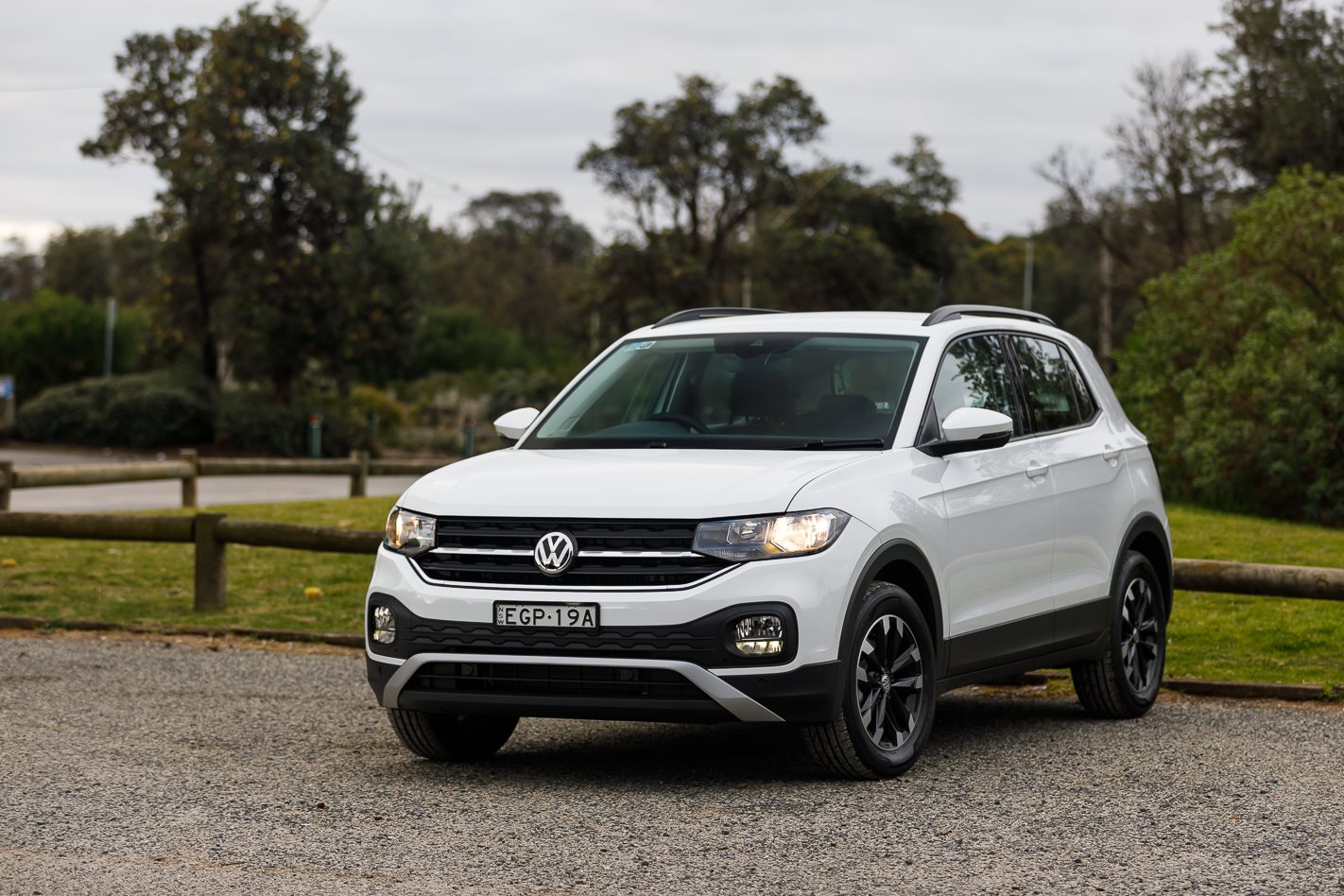
Even throughout a tumultuous start to 2020, the small SUV market steamrolls on unabated is only set to become more populated as the year progresses.
Volkswagen has been eyeing-off the space for a couple of years now and will no doubt be elated to welcome its entrant, the T-Cross, to the burgeoning space.

What is the Volkswagen T-Cross?
The T-Cross is a small SUV that’s set to join the likes of the Mitsubishi ASX, Toyota C-HR, Mazda CX-3 and Kia Seltos rivals.
It also gets a jump-start on other newcomers in 2020 like the Ford Puma and Toyota Yaris Cross, which are both due later this year.
It’s a brand-new model line for the German brand and is based off the Polo small hatch, retaining the same 1.0-litre turbocharged three-cylinder engine.
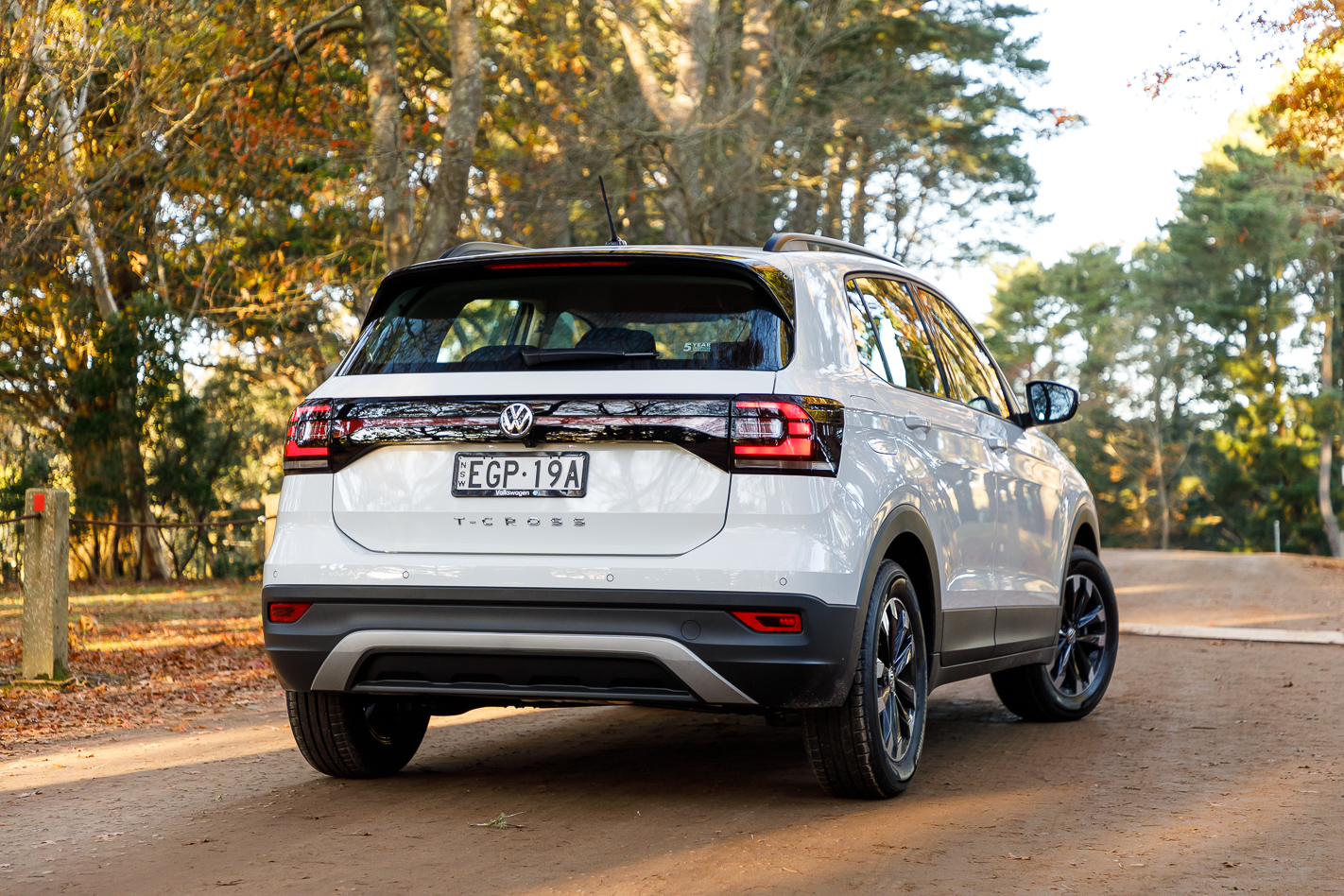
Together with the incoming T-Roc, which is positioned just above the T-Cross, Volkswagen addresses a sizeable gap in the lower end of its SUV range.
Volkswagen will offer the T-Cross in two specifications at first. The $27,990 (before on-road costs) Life is the entry-level car that gets a comfortable level of equipment such as 16-inch alloy wheels, front and rear parking sensors, reverse camera, AEB with pedestrian and cyclist detection, lane keep assist, an 8.0-inch infotainment screen with smartphone mirroring and even wireless phone charging.
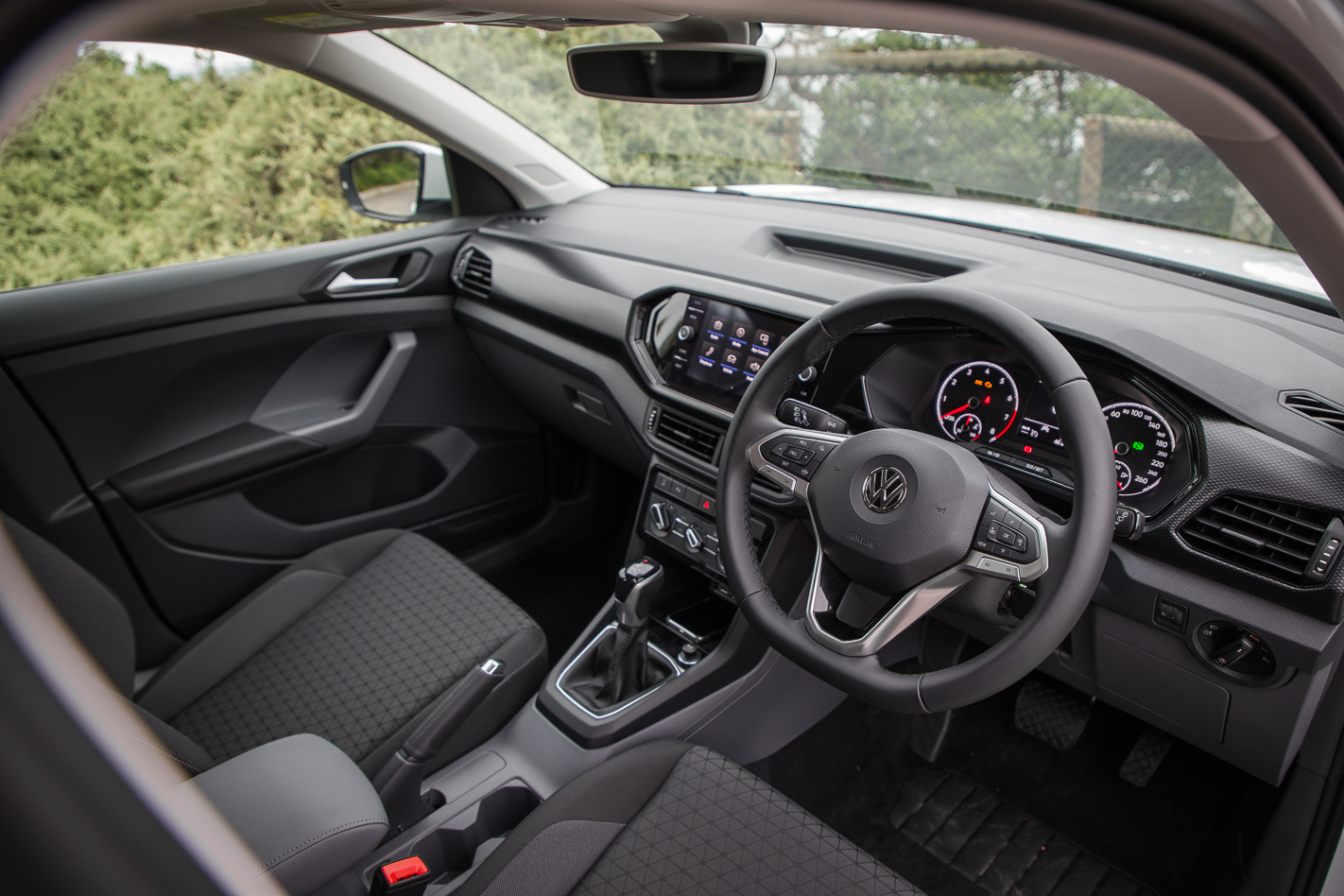
The Style steps up the kit with dual-zone climate control, 17-inch alloy wheels, LED headlights, adaptive cruise control, blind-spot monitoring and keyless entry.
Both cars are powered by a 1.0-litre three-cylinder turbocharged engine that outputs 85kW and 200Nm, both receive an automatic transmission as standard and both are driven by the front wheels only.
Volkswagen was planning on bringing a more powerful 110kW Style variant to the Australian market, though has since decided to replace that car with a lower-specification T-Roc with the same engine, priced from $33,990.
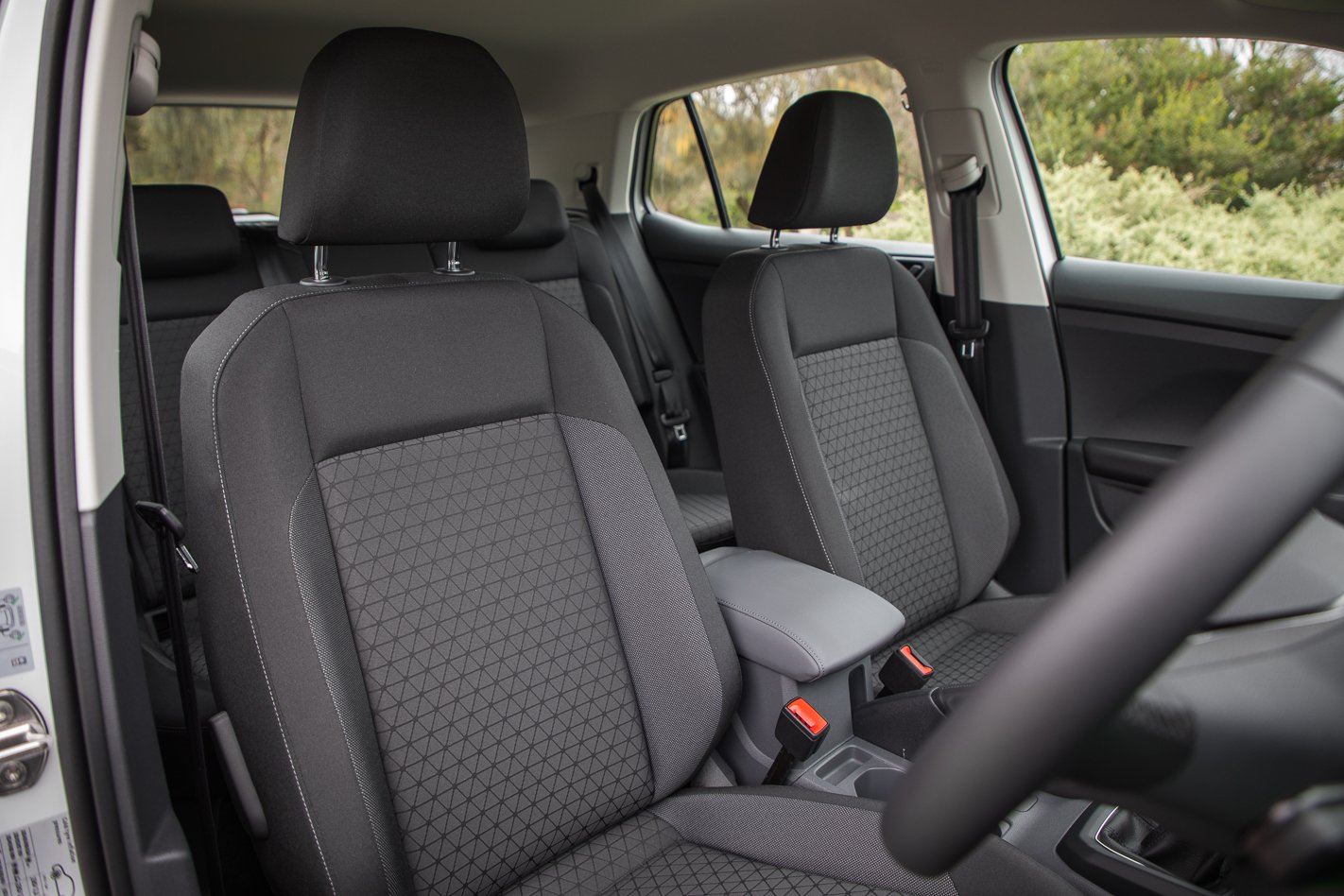
In terms of equipment you can add, the Life gets the option of a $1200 Driver Assistance pack, the Life and Style are available with the $1900 Sound and Vision pack and the Style can be had with a $2500 R-line package.
To read more about what those packages entail, check out our T-Cross pricing and features article.
What is the Volkswagen T-Cross like to drive?
Given that the T-Cross shares its DNA with the Polo, the family similarity is noticeable as soon as you jump inside. The first notable difference between the two is the extra roof height that is immediately apparent when setting off. The elevated glasshouse is easier to see out of and the high-riding seating position is a commanding experience; more so than in a Mazda CX-3, for example.
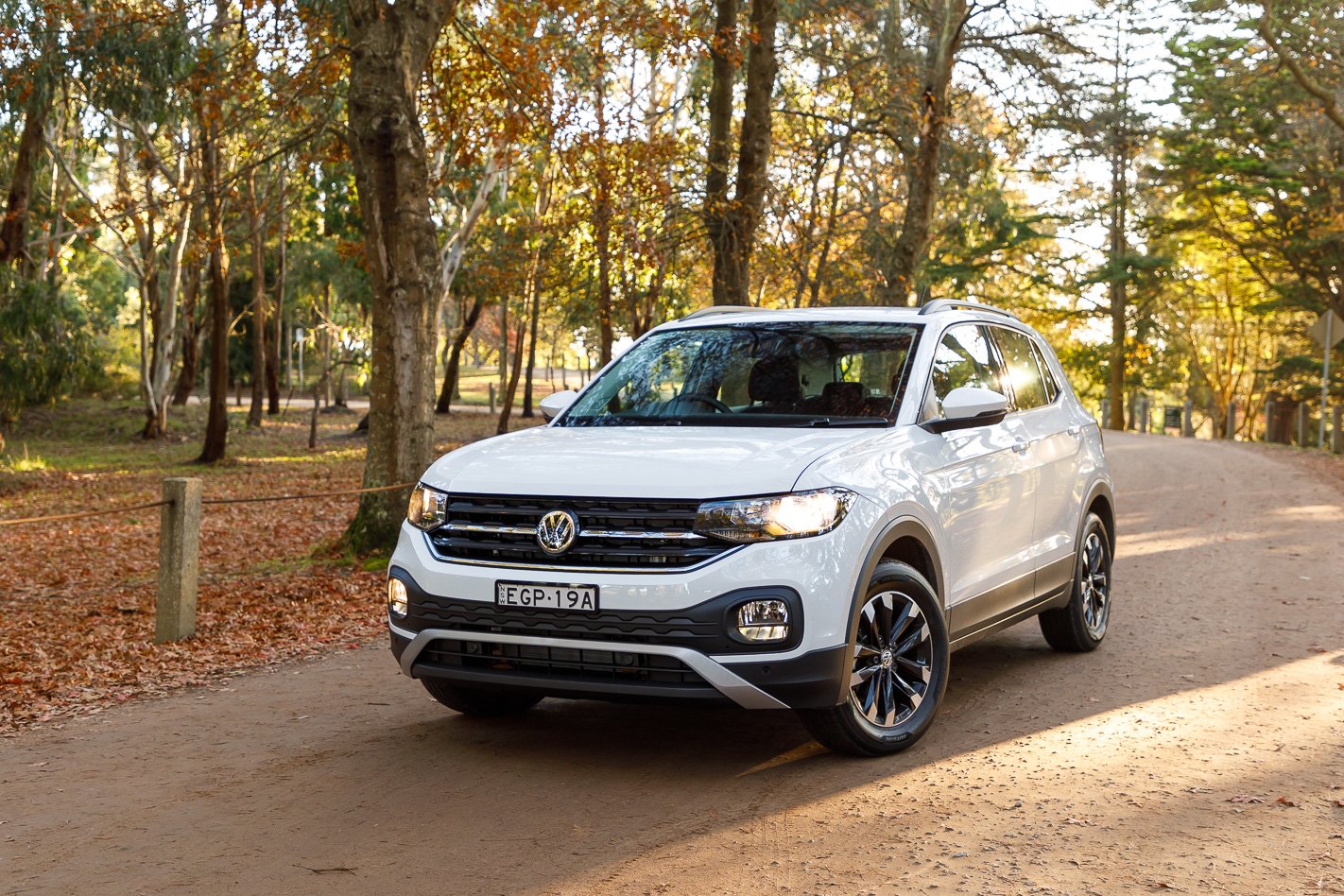
But for all the positives of the SUV, the increase in dimensions and weight can often be to the detriment of driveability.
It’s a fine balance to strike between liveability and being nimble, but thankfully the T-Cross doesn’t stray too far from the Polo’s dimensions as its 4108mm length (55mm longer than Polo) and 1583mm tall (137mm over Polo) stature is still easy to manoeuvre.
Although not particularly feelsome, the steering has a nice weight to it without feeling toy-like, while the seven-speed DSG transmission does a good job of selecting ratios about town. Annoyingly, the T-Cross succumbs to the characteristic DSG foible of a slow, hesitant take-off from a set of lights, which is compounded by the activation of the start/stop engine function.
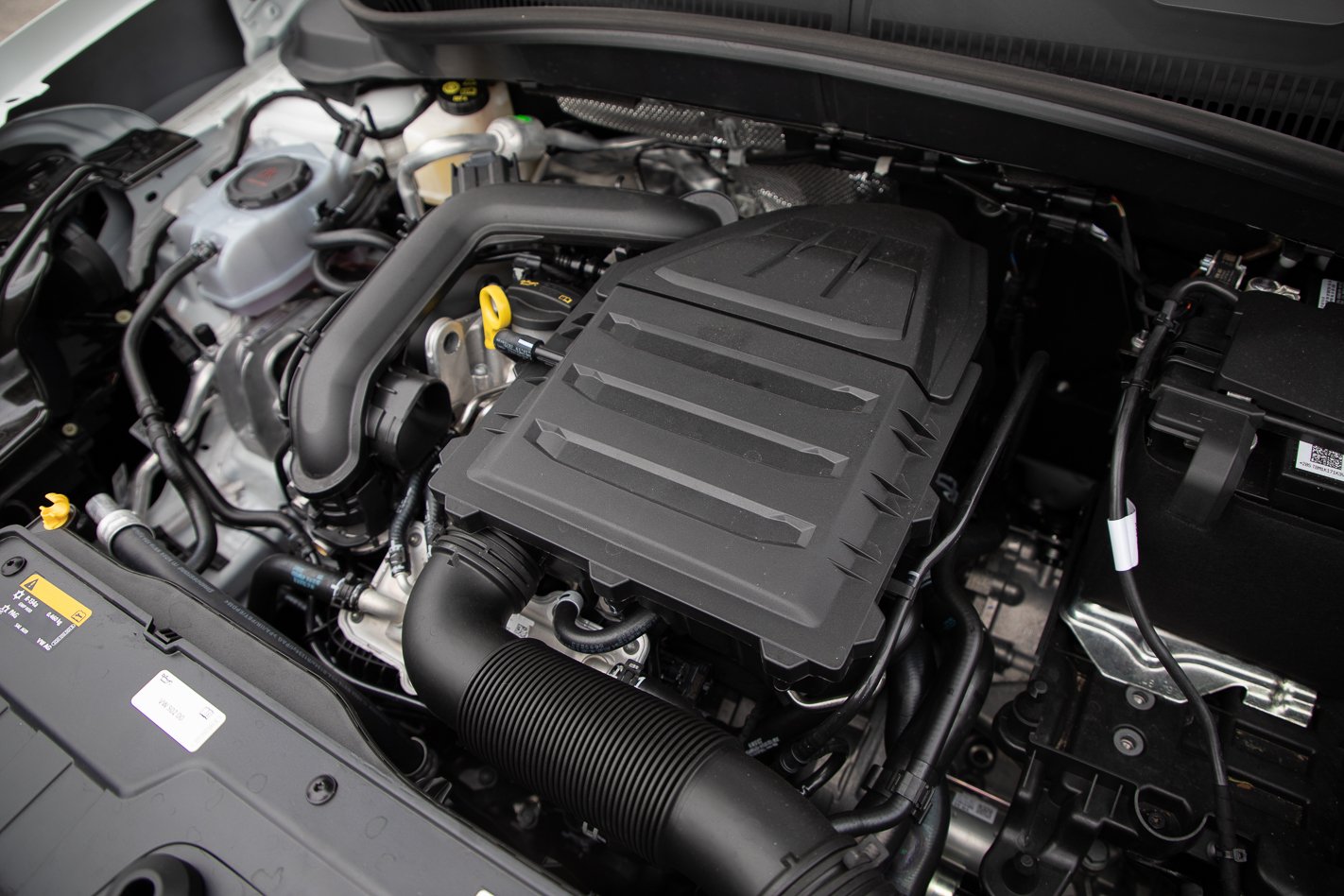
The 1.0-litre turbo engine is remarkably quiet and smooth even when pushing up through the rev range, but while its relatively meagre 85kW/200Nm outputs might suit the Polo, the same unit in the 88kg heavier T-Cross feels a touch weak. We’re keen to have a go in the forthcoming 110kW/250Nm version to see if this livens up the under-foot feel.
While on test, the T-Cross returned 6.9 L/100km on our city-centric test loop, which is up 1.5 litres on its combined fuel economy claim.
The T-Cross is a supremely comfortable place to spend time, thanks not only to its supportive seats, but also the compliant suspension tune that irons out road imperfections without worry and shields the occupants over larger bumps far better than a small SUV should.
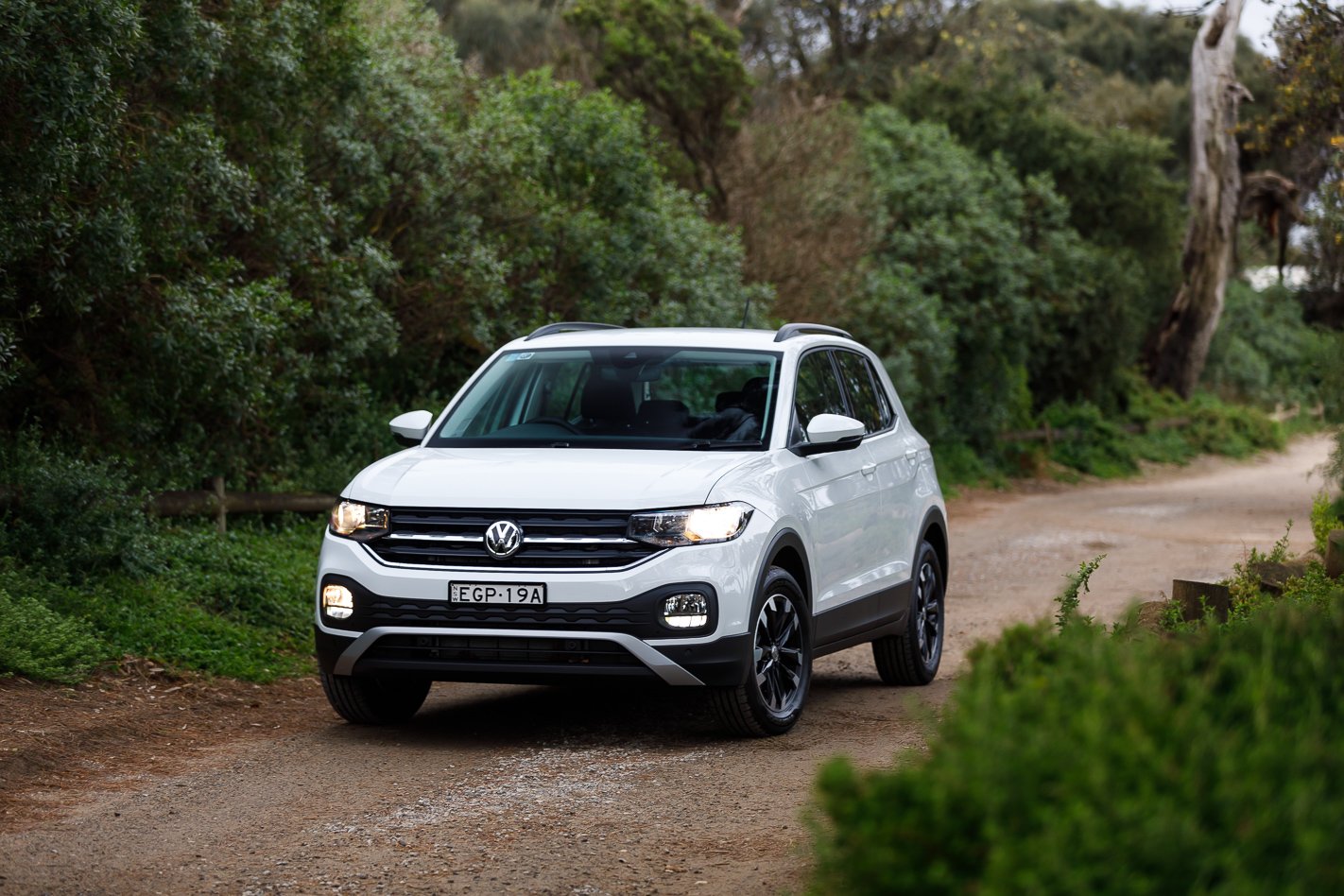
While they may all look like high-riding heroes, small SUVs don’t actually stray too far from the feel of a hatchback. With the T-Cross, it feels like a genuine SUV driving experience, despite its small stature. It offers great visibility and day-today practicality in a compact package.
If that’s what you’re after in a car, getting that for less than $30k is no small feat.
What is the Volkswagen T-Cross like to live with?
It all feels very familiar Volkswagen which will come as no shock, but adds new items into the mix such as a new design leather-wrapped steering wheel and gear selector.

In the base Life car which we had on test, the seats are a firm but comfortable cloth with a nice blend of patterns and most touchpoints are covered by either leather or fabric.
The dashboard and door cards are panelled with hard plastic but feel sturdy and likely to stand the test of time. The Style variant livens the vibe up a bit with added features and nicer materials.
Getting in and out is a breeze thanks to the lofty seating position and added ride height and makes using the 385-litre boot easy. Already a sizeable space in comparison to its competition, space can be expanded by sliding the rear bench forward to free up 455 litres of space. Versatile packaging in such a small car is always appreciated.

Space up front is comfy, while passengers aren’t cramped in the second row, with decent legroom and great feet and head room. Rear seaters are treated to two USB ports but no air outlet, and they can store items in handy door pockets.
There’s ample storage up front, too, with twin cupholders and a cubby in front of the shifter which contains a wireless charger as standard, a surprise inclusion on an entry-level car.
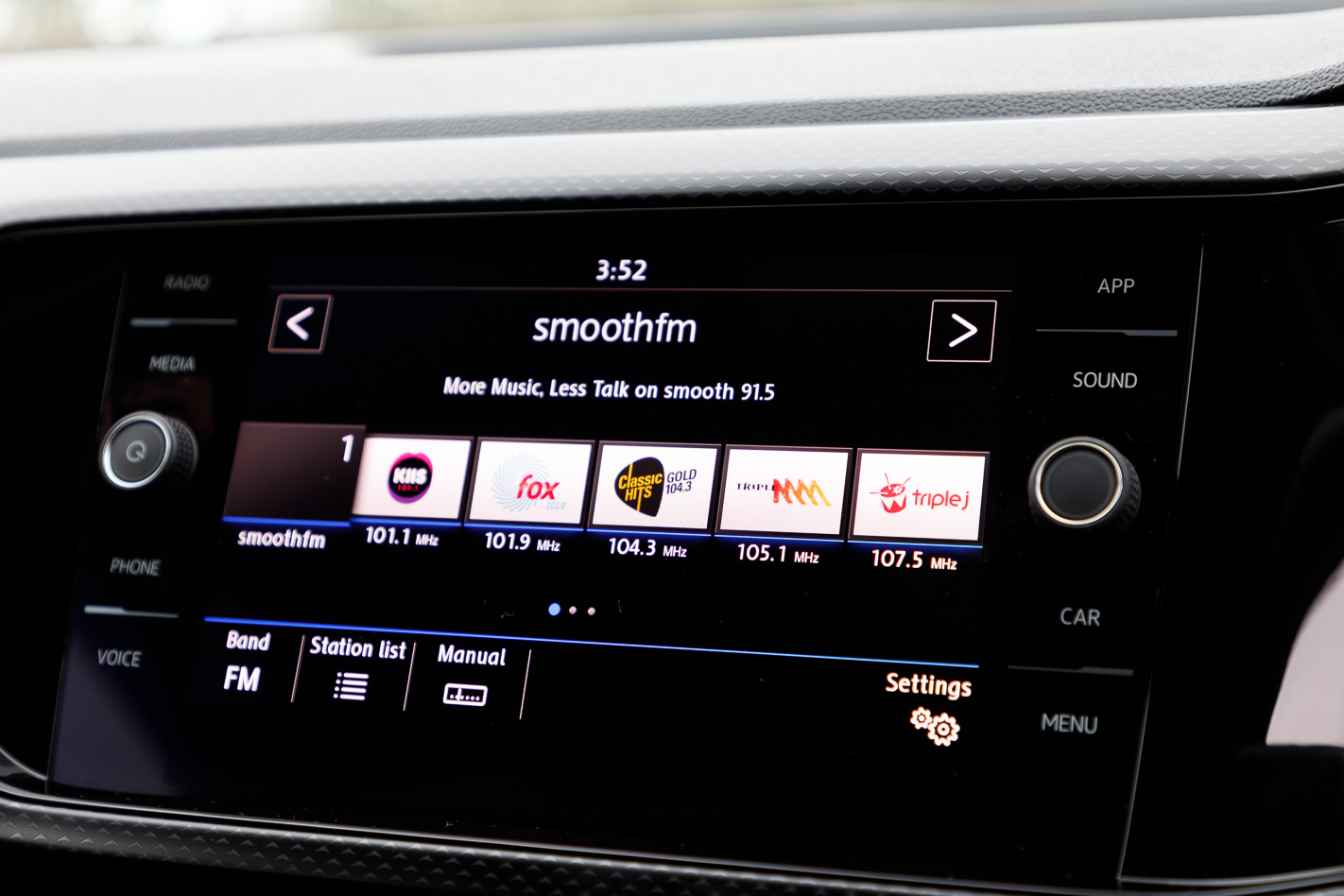
Android Auto and Apple CarPlay functionality is included on the 8.0-inch touchscreen but wasn’t really needed (unless you need a map app) as the native system is great. The new steering wheel is sculpted to your hand grip nicely but misses out on dedicated phone controls on the new button stack.
The T-Cross has received top marks in crash safety, scoring 5 stars from ANCAP and nets a five-year, unlimited-kilometre warranty that includes one year of roadside assistance.
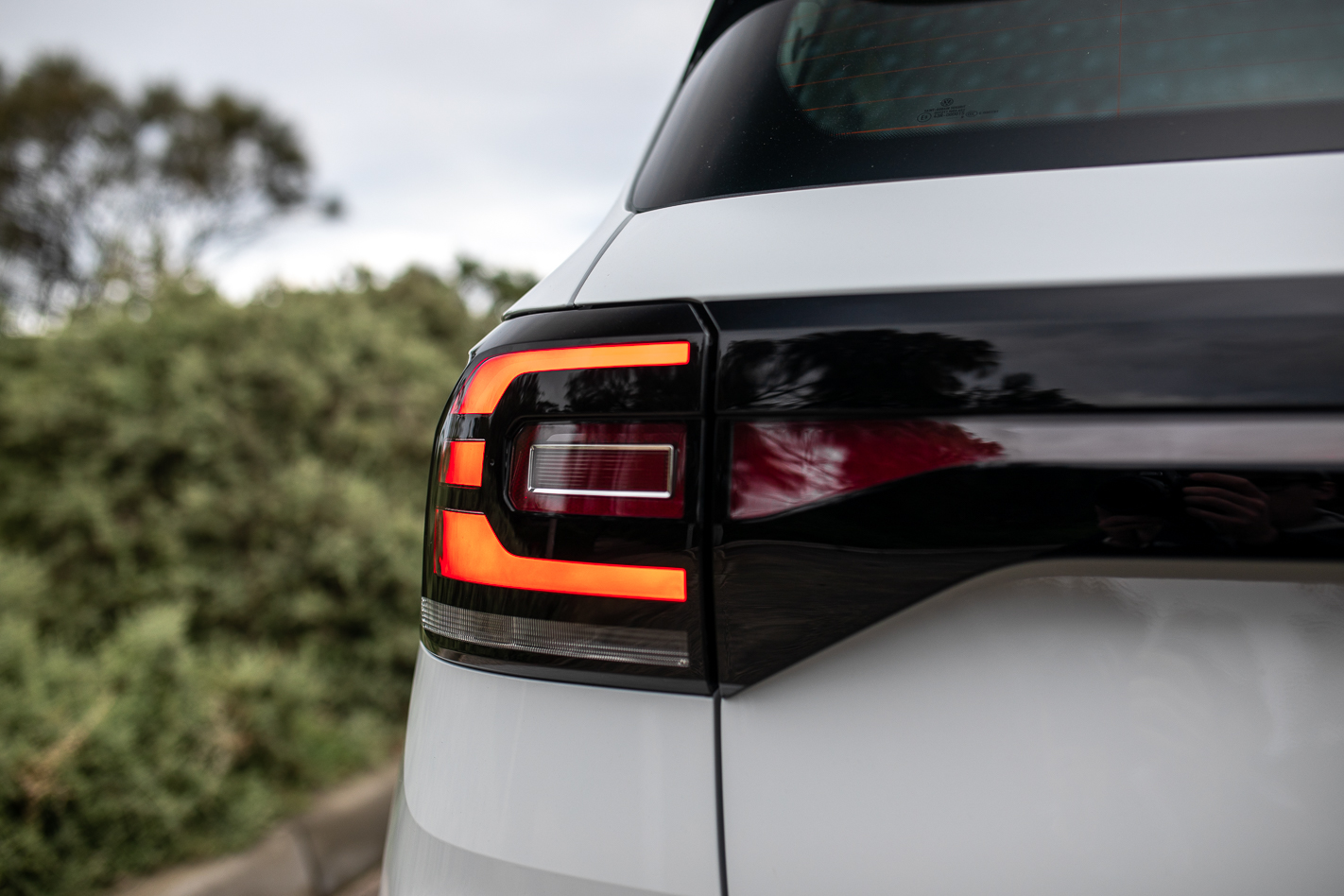
Is the Volkswagen T-Cross worth the money?
VW’s entry to the small SUV class has taken its time getting to market, but the company has done its research and the T-Cross stacks up favourably against the competition.
While it might be down on power compared to rivals, its driveability and agility make up for the deficit.
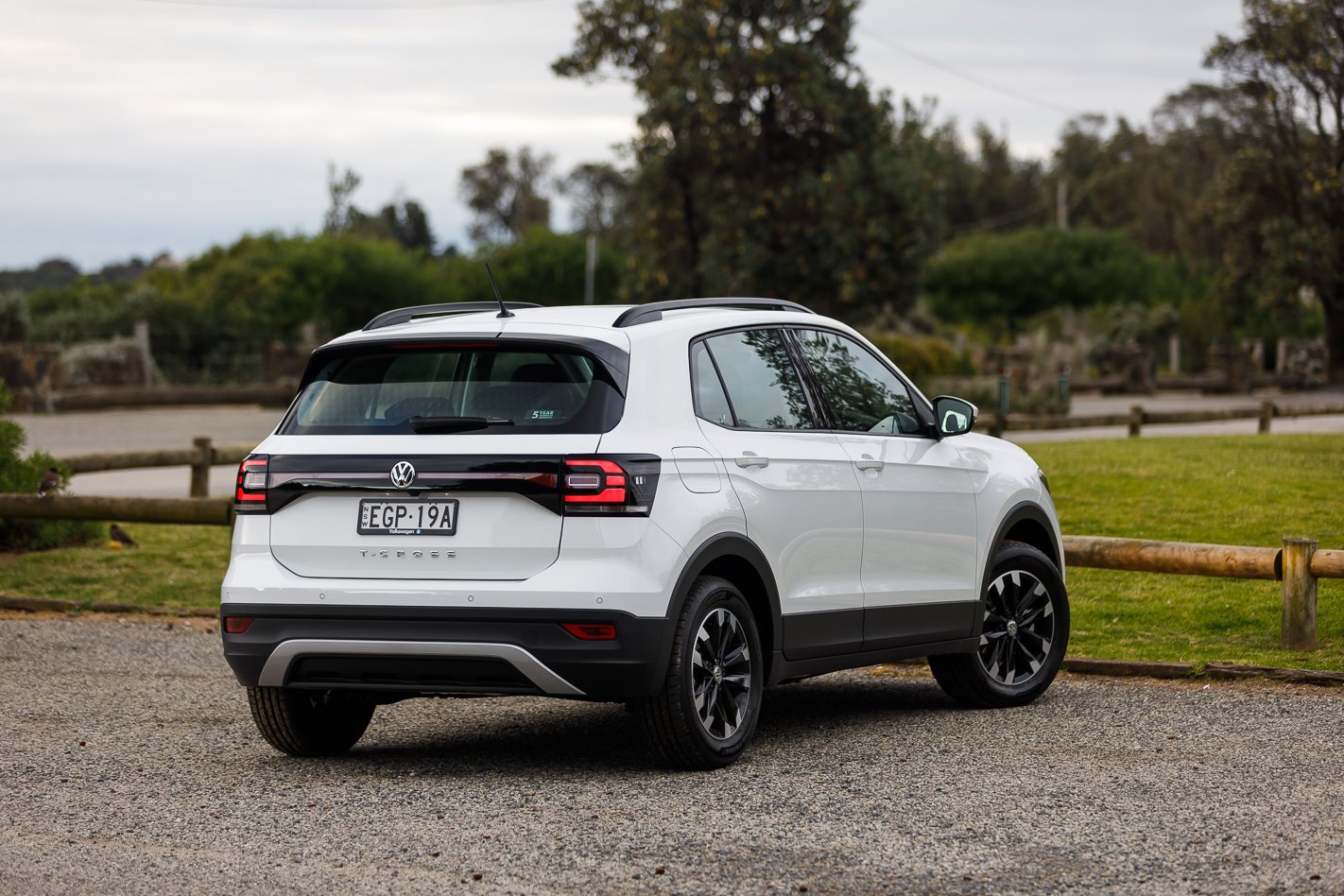
Volkswagen T-Cross: The Verdict
Whether it’s the T-Cross 85TSI Life or 85TSI Style, both offer compelling packages in a very populated segment.
It delivers a proper high-riding SUV drive experience and features more than enough amenities and space for a small SUV which isn’t necessarily a given for less than $30k.
With typical Volkswagen practicality and familiarity in a segment that buyers are flocking to in droves, we reckon it’ll sell its socks off.
Pros: List of standard equipment, turbocharged torque, SUV drive experience Cons: Hesitant off the mark with start/stop, no rear air vents
Rating: 4/5



